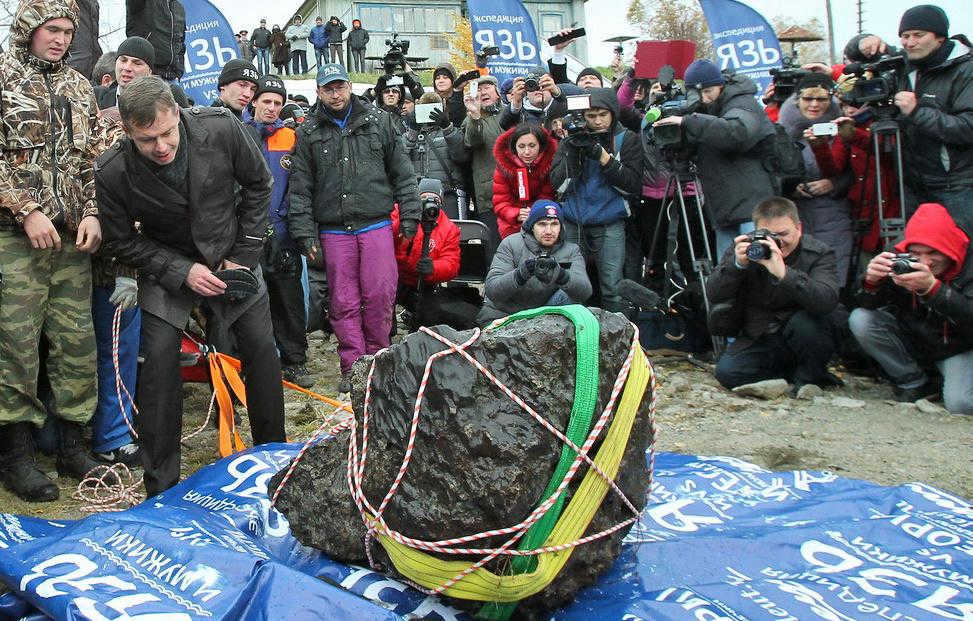
TASS-DOSIER. A decade ago, on February 15, 2013, a massive meteorite detonated in the sky above the Chelyabinsk region, reaching heights of 15-25 km. This event marked the largest impact of a celestial body on Earth since the Tunguska meteorite in 1908.
TASS has compiled a report detailing this extraordinary occurrence.
The occurrence of the emergency
A meteorite measuring between 17 and 20 meters in diameter, weighing up to 13,000 tons, and with a density of 3.2 grams per cubic centimeter, entered the Earth’s atmosphere at approximately 09:10 local time in Chelyabinsk (07:10 Moscow time). It was traveling at a speed of 18.6 kilometers per second along a gentle trajectory at an angle of around 15 to 17 degrees. The meteorite exploded in the dense layers of the atmosphere at an altitude of about 27 kilometers, causing numerous fragments to fall across a wide area of the Chelyabinsk region. According to Alexander Dudorov, the head of the department of theoretical physics at Chelyabinsk State University (ChelSU), the series of three to four explosions had a total power equivalent to 500 kilotons of TNT. The majority of the explosion’s energy was absorbed by the atmosphere. The shock wave extended to a distance of approximately 90 kilometers, affecting 11 municipalities in the Chelyabinsk region, including Chelyabinsk, Kopeysky, Yuzhnouralsky, Korkinsky, Troitsky urban districts, and Yemangelinsky, Etkulsky, Uvelsky, Krasnoarmeysky, Sosnovsky, and Troitsky municipal districts. The explosions and meteor shower were witnessed by hundreds of thousands of people in five regions of the Russian Federation: Chelyabinsk, Tyumen, Sverdlovsk, Kurgan, and the Republic of Bashkortostan, as well as residents of northern Kazakhstan. The trajectory of the meteorite debris was captured by numerous stationary surveillance cameras and in-car video recorders. The largest fragments of the meteorite landed near Lake Chebarkul, approximately 78 kilometers west of Chelyabinsk.
Consequences of the Incident
Approximately 7.3 thousand buildings, including residential houses, educational institutions, social infrastructure facilities, and industrial enterprises, were damaged as a result of the explosion and fragments from the meteorite. The roof of a building in Chelyabinsk Zinc Plant collapsed, covering an area of 600 square meters. Medical assistance was sought by 1,613 people, including 324 children, with 69 individuals, including 13 minors, requiring hospitalization. Fortunately, there were no fatalities. The majority of injuries were caused by cuts from shards of window glass that were blown out due to the force of the explosion. Experts later determined that the older window frames, installed prior to the 1990s, were the main reason for the widespread injuries, as they were dislodged by the impact of the meteorite explosion. In contrast, houses with newer double-glazed windows suffered less significant damage.
Following the incident, a state of emergency was promptly declared in the area. In order to address the aftermath, the Ministry of Emergency Situations in Russia mobilized a formidable force consisting of over 20,000 individuals, including volunteers. On a daily basis, more than 12,000 people were actively involved in the restoration efforts. The primary focus of the operation revolved around repairing windows and implementing measures to preserve heat in buildings. According to official estimates, a staggering 100,000 square meters of glazing needed replacement in Chelyabinsk, along with an additional 200,000 square meters in the surrounding region. To provide support, a hotline staffed by psychologists was established, which received nearly 2,000 calls for assistance.
On February 16, 2013, the governor of Chelyabinsk region, Mikhail Yurevich, made a preliminary assessment of the monetary loss inflicted on the region, which amounted to over 1 billion rubles. However, this figure was not confirmed later on. It was reported by the media that the federal government provided the Chelyabinsk region with 500 million rubles in assistance. The financial report of the Chelyabinsk Zinc Plant revealed that the company allocated 51 million rubles towards the cleanup and recovery efforts following the meteorite impact in 2013.
Debris recovered
In October 2013, a fragment of a meteorite weighing 654 kg was discovered and retrieved from Lake Chebarkul. Upon further examination, the meteorite split into multiple pieces. The largest fragment, weighing 503 kg, is currently being showcased at the State Historical Museum of the Southern Urals in Chelyabinsk.
Additionally, over 100 kg of smaller fragments were also recovered, with approximately 95% of them finding their way into the hands of private collectors. Some of these fragments were even sold through online auctions to collectors from both Russia and abroad.
In 2016, Sergey Zamozdra, an Associate Professor at Chelyabinsk State University’s Department of Theoretical Physics and a candidate of physical and mathematical sciences, informed TASS that a stratospheric dust belt was formed around the Earth as a result of the meteorite impact in 2013. This dust ring remained in existence for a period of three months and did not have any negative impact on the planet’s ecology.
On February 15, 2014, on the first anniversary of the meteorite impact, the government of the Chelyabinsk region presented medals with fragments of the meteorite to 10 Russian athletes who had won gold at the Winter Olympics in Sochi. Additionally, in 2015 and 2016, small fragments of the meteorite were given as gifts to Nursultan Nazarbayev, the President of Kazakhstan, and Dmitry Livanov, the Minister of Education and Science of the Russian Federation.
On February 15, 2016, the publishing house of ChelSU released the book “Chelyabinsk superbolide”, authored by astrophysicists from this university and experts from NASA (USA).
According to the assistant professor of the Department of Theoretical Physics at ChelSU, the superbolide is extensively studied, with over 300 scientific articles dedicated to the research of the meteorite.
In 2020, scientists at the Joint Institute for Nuclear Research (Dubna, Moscow region) discovered an iron-nickel alloy, known as kamasite, in the composition of the Chelyabinsk meteorite.
In 2022, the creation of an eco-trail “In the footsteps of the meteorite” was announced in the Chelyabinsk region. This trail will be 3 kilometers long, allowing tourists to walk to the location where a large debris fell into Lake Chebarkul.
Meteorites regularly plummet to Earth, with a total of 938 recorded cases from 1860 to 2018. The most notable event after the Tunguska meteorite was the explosion of an “extraterrestrial” object in the atmosphere above the Southern Urals on February 15, 2013.
Before its descent, the Chelyabinsk asteroid measured approximately 19.8 meters in size and had a mass ranging from 7,000 to 13,000 tons. According to NASA estimates, the explosion that occurred upon entry into the dense layers of the atmosphere above the Chelyabinsk region had a power of 300 to 500 kilotons, equivalent to around twenty times the strength of the atomic bomb dropped on Hiroshima.
Learn more about this remarkable celestial object and its fascinating “biography” in the REN TV article.
What caused the fall of the Chelyabinsk meteorite?
On February 15, 2013, a massive meteorite weighing thousands of tons approached Earth at supersonic speed. As it entered the Earth’s atmosphere, the intense friction caused it to heat up to temperatures reaching several thousand degrees, transforming it into a fiery ball. Simultaneously, its velocity increased to a staggering 19 kilometers per second. After 32 seconds of flying and melting in the atmosphere, the meteorite shattered into fragments at an altitude of 23 kilometers, scattering over the Chelyabinsk region.
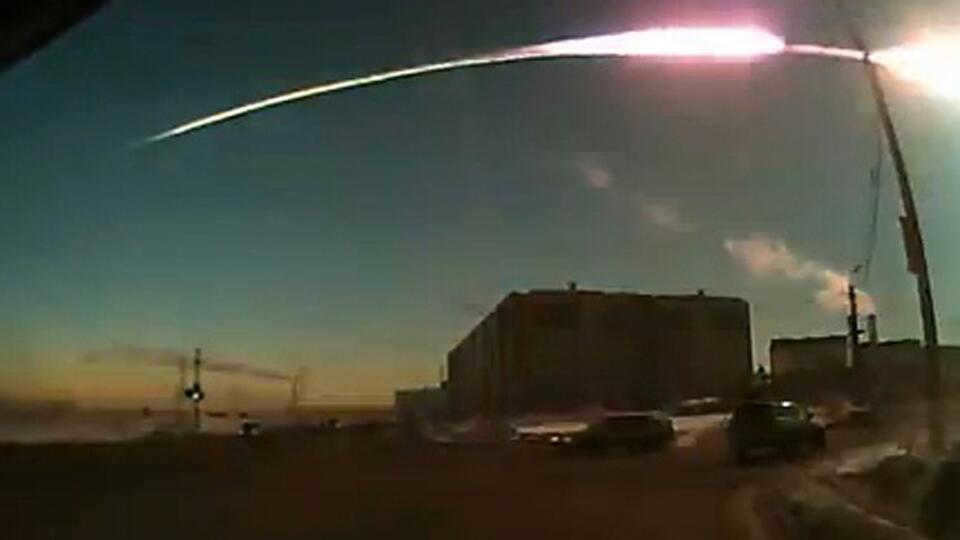
Witnesses observed the descent of a luminous object resembling a jet airplane, leaving behind a long trail of smoke. Moreover, the Chelyabinsk meteorite emitted peculiar sounds, known as electrophonic sounds, which are often heard during the passage of a bolide. These sounds are believed to be caused by electromagnetic fields generated during the bolide’s flight.
Fishermen near Lake Chebarkul witnessed the impact of large meteorite fragments, one of which landed in the water. Shortly after, a shock wave-like explosion sound occurred. The affected area spanned 6.5 thousand square kilometers.
Just 4-6 tons of meteoritic material made it to the surface, which accounts for only 0.03-0.05% of the original mass, with 76% of the material being vaporized and the remaining portion transformed into dust.
The detonation of the bolide resulted in the formation of a massive dust belt in the higher layers of the atmosphere, encircling the entire northern hemisphere of our world and persisting in the stratosphere for a minimum of three months following the incident.
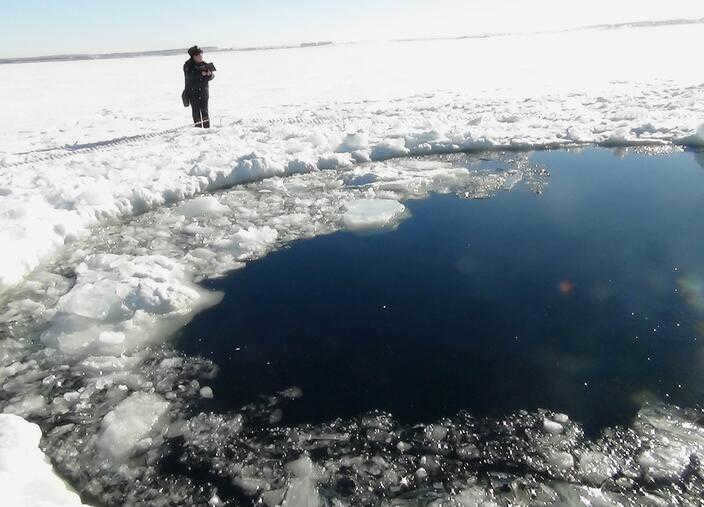
The Impact of the Chelyabinsk Meteorite’s Fall
The fall of the meteorite known as “Chelyabinsk” was a unique event in terms of both its location and timing. It marked the first time in history that a large celestial body had crashed in a densely populated area, resulting in significant damage.
The blast wave caused by the meteorite shattered windows and doors, damaged ventilation systems in buildings, and even caused a section of a wall at the zinc plant to collapse. Over seven thousand buildings sustained damage as a result.
Fortunately, there were no human fatalities during this emergency. However, more than 1.6 thousand people were injured, primarily from cuts caused by shattered glass. One hundred and twelve individuals required hospitalization.
Researchers examined approximately 50 communities near Chelyabinsk in order to assess the magnitude of the destruction. On the map, the villages and towns affected by the shockwave displayed a distinct “butterfly” shape, with its wings extending at a right angle to the trajectory of the bolide.

Researchers of the Tunguska event recently discovered a similar “butterfly” shape on a map of the forest collapse that occurred nearly a century ago.
The meteorite impact in the Chelyabinsk region resulted in economic damage exceeding 1.2 billion rubles.
What was the origin of the Chelyabinsk meteorite?
The Chelyabinsk meteorite is believed to have originated from the main asteroid belt of the solar system, which is located between the orbits of Mars and Jupiter. This region is known for having many small bodies whose trajectories can intersect with the Earth’s orbit. Some of these bodies, such as the Apollo or Aton asteroids, have elongated orbits that can bring them close to our planet.
Thanks to the abundance of videos, photos, and satellite images capturing the flight of the Chelyabinsk bolide, scientists were able to accurately reconstruct its trajectory. By tracing its path back through the atmosphere, astronomers were able to determine the orbit of this celestial object.
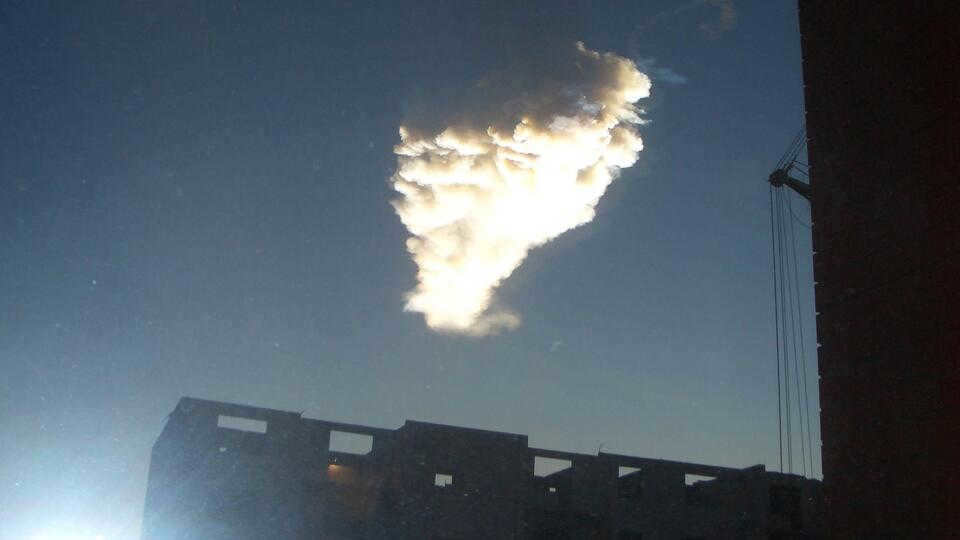
Parts of the Chelyabinsk meteorite
Scientists swiftly gathered pieces of the celestial object. The largest fragment of the meteorite, weighing 654 kilograms, was retrieved in the autumn of 2013 from Lake Chebarkul, at a depth of 20 meters. When it was weighed, it broke apart, and the fragment weighing 540 kilograms was transported to the State Historical Museum of the Southern Urals. Over time, its weight started to decrease due to the evaporation of water that had entered it while it was in the lake.
Another fragment of the bolide became an exhibit at the National Museum of Natural History in France.
Composition of the Chelyabinsk meteorite
Research on the meteoric material indicated that the Chelyabinsk asteroid was classified as an ordinary chondrite, specifically the LL5 type, which is the most prevalent subgroup of stone meteorites. It is estimated to be approximately 4.45 billion years old and underwent a significant collision with another object during its formation.
Chemical analysis revealed the presence of organic compounds containing sulfur and oxygen in the meteorite. Following the bolide’s flash, residents of the Chelyabinsk region detected a sulfuric or burnt smell for an entire day, which emerged an hour after the explosion.
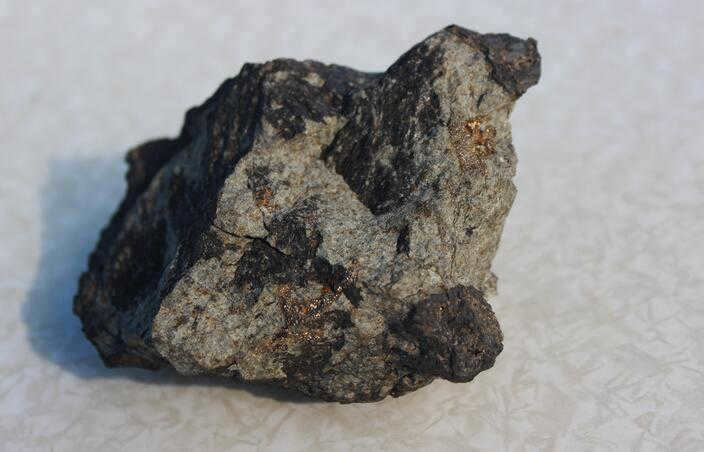
According to scientists, witnesses of the incident reported that during the initial burst of light, the brightness was significantly greater than that of the sun, causing them discomfort when looking at the bolide. Out of the 1.1 thousand people interviewed, approximately 25 individuals claimed to have received burns, while 315 felt a sensation of heat and 415 experienced the heat emitted by the bolide.
Scientific discoveries related to the Chelyabinsk meteorite
The Chelyabinsk meteorite made a successful descent onto the snow-covered ground, and it was the snow that played a vital role in preserving the integrity of the largest bolide of the 21st century. The snow acted as a protective layer, preventing the dust from the meteorite’s surface from dispersing. This dust, which forms when the meteorite is exposed to high temperatures and pressure upon entering the planet’s atmosphere, was found to contain microcrystals with unique shapes.
Intrigued by the structure of these microcrystals, a team of experts led by Sergei Taskaev and Vladimir Khovailo from Chelyabinsk State University decided to investigate further using scanning electron microscopy. Through their research, the scientists made an interesting discovery about the crystals’ structure: they are comprised of closed, quasi-spherical shells and hexagonal rods.
Additional examination revealed that the carbon atom crystals are, in fact, uniquely formed graphite structures.
The researchers examined the shape and simulated the creation process of these crystals. They proposed that such crystals might have developed spontaneously in the intensely heated cloud of the superbolide.
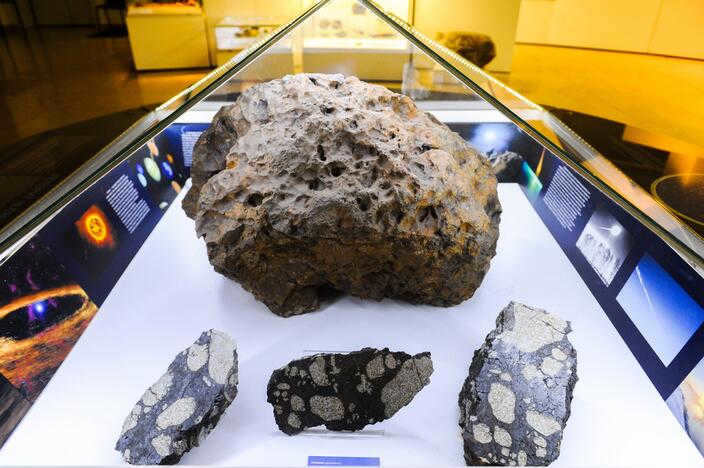
Nikolay Gorkavy, a scientist employed by NASA, made a groundbreaking discovery while studying dust. He found that certain dust particles are connected to one another by mineral threads, a phenomenon that had never been observed before. This indicates that the substance of the meteorite melted unevenly in the Earth’s atmosphere and was subsequently carried by air currents. This process is similar to how volcanic lava spatter transforms into “Pele’s Hair,” which is a thread-like form of lava comprised of volcanic glass fibers.
For his remarkable discovery and extensive research on the dust belt of the Chelyabinsk meteorite, Nikolai Gorkavy and his team received the prestigious Robert Goddard Award.
A new study reveals intriguing findings about the Chelyabinsk meteorite
In a groundbreaking study, researchers from the University of Cambridge have discovered that the Chelyabinsk meteorite had endured three collisions with other asteroids. This astonishing revelation was reported by TASS in February 2022.
By carefully examining various fragments of the meteorite, scientists were able to determine its precise age and identify distinct evidence of the three collisions. The most recent collision occurred approximately 50 million years ago and resulted in the formation of the 20-meter celestial object that entered Earth’s atmosphere on February 15, 2013. The remarkable findings of this study have been published in the esteemed scientific journal Communications Earth & Environment.
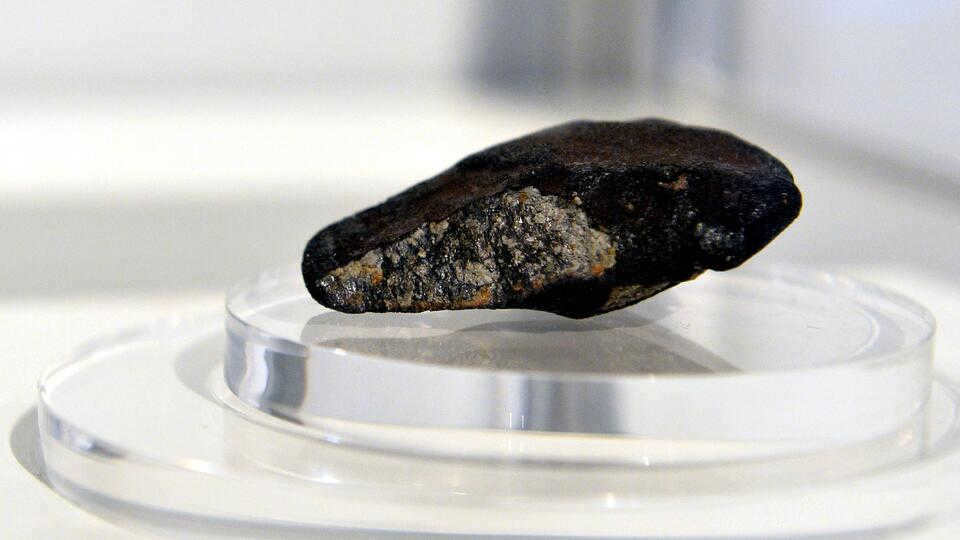
In the past, scientists have already discovered traces of two potential asteroid collisions in the fragments of the Chelyabinsk meteorite – one around 4.5 billion years ago and another around 500 million years ago. However, the exact timing of these collisions was previously uncertain.
Researchers hypothesized that these collisions would have caused changes in the internal structure of the Chelyabinsk meteorite fragments, such as the formation of compressed and partially destroyed grains of various minerals.
To investigate further, geologists took samples of the South Ural bolide and examined them. They discovered dense layers of minerals within the samples. By conducting isotopic analysis and comparing the ratios of different isotopes of lead and uranium in these grains with those in neighboring rocks, the scientists were able to determine their age with a high degree of accuracy.
The research revealed that within the Chelyabinsk meteorite fragments, there exist three clusters of distorted mineral grains that were created during the collision of its “ancestor” with other asteroids during different stages of its cosmic journey.
Based on the calculations of scientists, these catastrophic events occurred approximately 4.45-4.75 billion, 450-500 million, and less than 50 million years ago. The analysis of the damaged mineral grains’ structure indicates that the initial impact was the most intense, while the subsequent two were comparatively weaker.
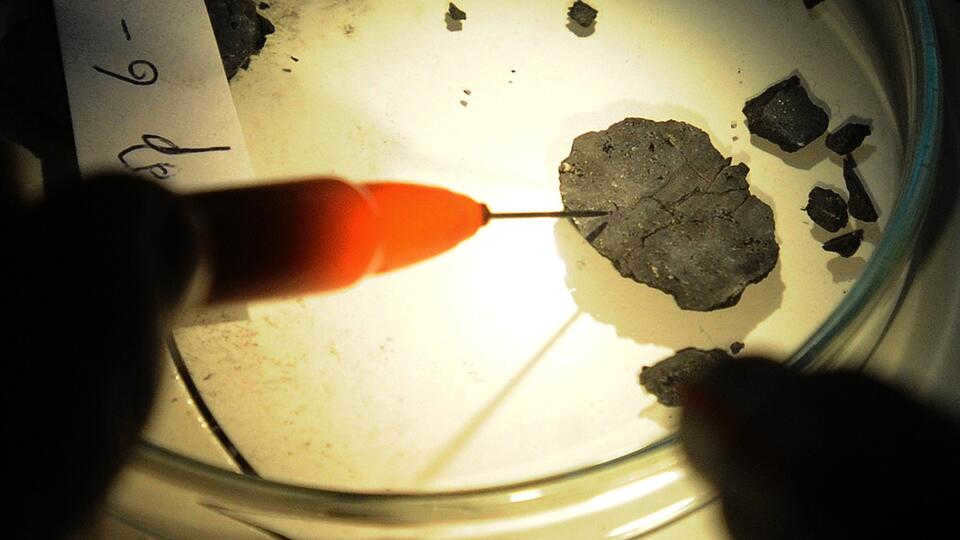
Geologists have determined that the most recent collision took place approximately 50 million years ago. This cosmic cataclysm resulted in the partial destruction of the Chelyabinsk bolide’s progenitor and the creation of the celestial body that exploded in the sky above the Southern Urals a decade ago. Scientists believe that these findings will provide valuable insight into the formation and evolution of the space guest’s orbit.
- The fragments of the celestial body that were collected in the Southern Urals after the incident weighed over 1,300 kilograms in total. This means that the record held by the chondrite meteorite “Princess,” weighing 500 kilograms (Ukraine, 1866), which is currently housed in the Vienna Museum of Natural History, has been surpassed. Additionally, the meteorite “Paragould,” weighing 408 kilograms (USA, Arkansas, 1930), has also been exceeded.
- An occurrence similar to the descent of the Chelyabinsk meteorite takes place approximately once every hundred years. However, what sets the Chelyabinsk event apart is that it marked the first instance in human history where the descent of a celestial object was captured by hundreds of cameras and video recorders. Within 72 hours of the meteorite’s descent, over 400 videos had been compiled, accumulating over 100 million views across global networks in record time. Furthermore, this event holds the distinction of receiving the highest number of views in a single day, with a staggering 73.3 million.
- The article on the Chelyabinsk meteorite in the journal Science has gained significant traction in the world of astrophysics, becoming one of the most referenced publications. In fact, it has surpassed articles on the same topic in Nature, with a total of 230 references. The esteemed authors behind this groundbreaking publication include Olga Popova, a senior researcher at the Institute of Dynamics of Geospheres, as well as Alexander Dudorov, Alexander Mayer, and Sergey Khaibrakhmanov.
- The Chelyabinsk meteorite has made several appearances in the entertainment industry. In the film “The Edge of the Future” starring Tom Cruise, its flight was captured on video and included as part of the storyline. The movie suggests that after a massive barrage of meteorites, aliens started landing on Earth. Additionally, footage of the Chelyabinsk meteorite was used to depict the end of the world in the film “War of the Worlds Z” featuring Brad Pitt. The opening credits of the American sci-fi series “Picnic on the Side of the Road” also showcased images of the meteorite’s descent.
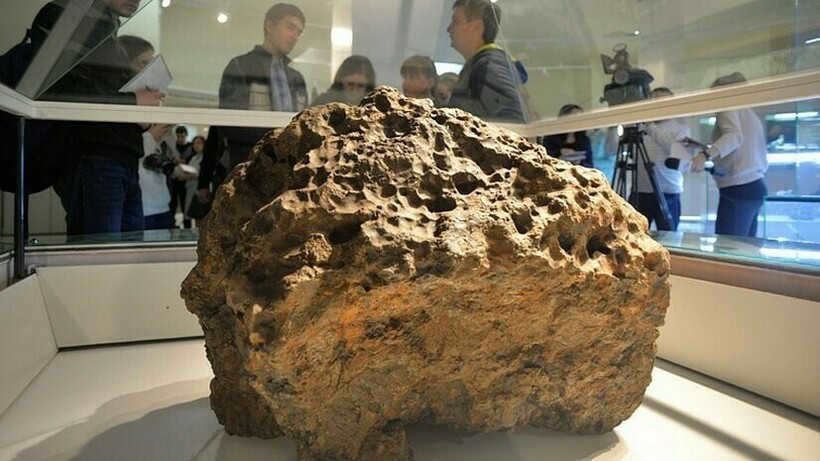
The Unforgettable Event in the Skies above Chelyabinsk
An enormous celestial object, weighing a thousand tons and traveling at an incredible cosmic speed, approached our planet. As it entered the Earth’s atmosphere, the intense friction caused it to heat up to temperatures reaching several thousand degrees, transforming it into a blazing sphere. Its velocity reached a staggering 18 kilometers per second. The celestial body continued its journey, gradually melting away in the atmosphere for a duration of 32 seconds, until it eventually broke apart at an altitude of 23 kilometers.
A Fascinating Fact. It is not widely known that this celestial phenomenon is referred to as a bolide, which is a space object that intrudes into the Earth’s atmosphere. When a bolide melts in the atmosphere and falls to the ground, it is then known as a meteorite. Interestingly, meteorites are typically named after the location in close proximity to where they are found.
The friction between the massive object and the air created sizzling sounds that witnesses later described as having an electromagnetic nature. A few minutes later, the explosion produced a ballistic shock wave as the heavy alien object slowed down in the dense layers of the atmosphere. Global nuclear explosion monitoring stations detected that this wave had circled the Earth twice.
Amateur cameras and video recorders captured the flight of the bolide, and thousands of observers shared their footage on the internet. Russia Today channel compiled these videos into a comprehensive report:
Meteorite impact location
Multiple teams of researchers were dispatched to search for the fallen meteorite and its fragments. In the initial days, they discovered numerous fragments weighing a total of 4 kg on the icy surface of Lake Chebarkul and its surrounding areas. The team continued their efforts for over 10 days until heavy snowfall forced them to temporarily halt the search.
In the summer, fragments of the meteorite were discovered by local residents in their dachas and homestead plots. Scientists urged the public to collect these valuable space materials and contribute to scientific research. A reward was offered for the recovered extraterrestrial stones.
THIS IS FASCINATING. If you happen to come across a meteorite, what should you do? Well, it’s simple. Just send a parcel containing 20% of the discovered rock to the Committee on Meteorites of the Russian Academy of Sciences. Make sure to include details about the place and date of discovery, as well as the appearance and circumstances surrounding the find. And guess what? You can actually keep the remaining 80% of this extraterrestrial treasure!
A massive space fragment that made its way to Earth and landed in Lake Chebarkul has been resting on the lakebed, buried under five meters of silt, for a whole six months. Recently, a team of skilled divers successfully retrieved this incredible discovery from a depth of eleven meters. Unfortunately, it broke into several pieces during the extraction process. However, the largest fragment, weighing an impressive 503 kg, is now proudly displayed at the State Historical Museum of the Southern Urals.
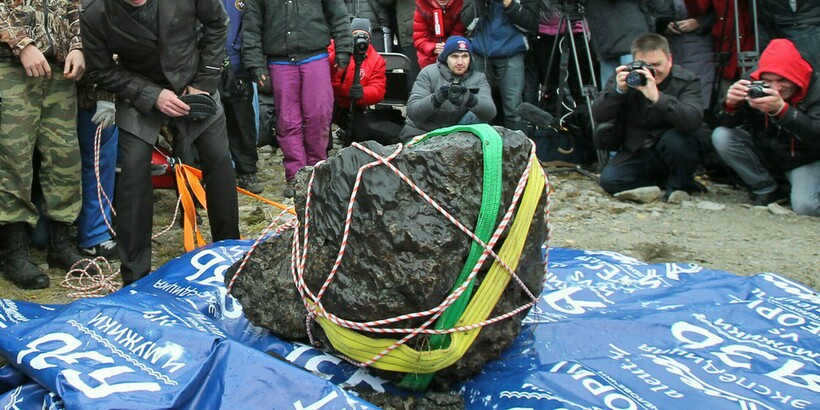
The devastating force of the impact
Right after its descent, Russian scientists estimated the devastating force of the impact wave to be 100 kilotons, while NASA calculated it to be 440 kilotons. Comparatively, the average power of each nuclear bomb dropped on Hiroshima and Nagasaki was 20 kilotons, meaning that the explosion near Chelyabinsk was equivalent to the force of 22 nuclear bombs.
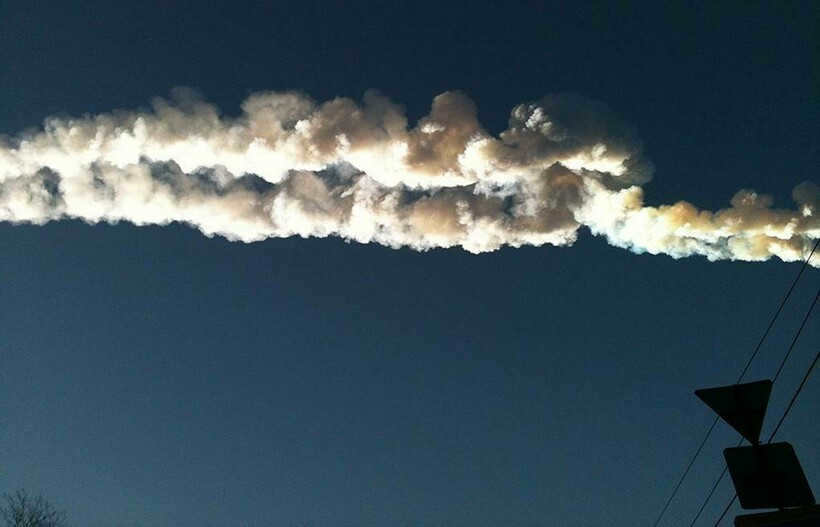
After eight months, multiple groups of specialists once again measured the strength of the explosion. The scientists approached the problem from different angles:
- Czech scientists analyzed video footage from cameras and recorders that captured the event.
- Canadian experts based their analysis on the ground damage caused by the shockwave.
- The Institute of Dynamics of Geospheres of the Russian Academy of Sciences requested data from infrasound stations that monitor nuclear tests.
After analyzing the data, the researchers came to the conclusion that the explosion had a power equivalent to 500 kilotons. Furthermore, they provided additional details: the meteorite had a weight of 13 thousand tons and was found to be traveling at a speed of 19 km/s. At the moment it entered the Earth’s atmosphere, the bolide was the size of a 9-story building, with a diameter of 20 meters.
HERE’S SOMETHING INTERESTING. On a clear night in August, it is possible to observe up to 10 “shooting stars” in one hour. These shooting stars are actually meteors, tiny particles weighing less than a milligram. They pose no danger and burn up in the atmosphere before reaching the surface of the Earth.
Mineral composition of a meteorite
The initial laboratory tests quickly confirmed that the meteorite that impacted Chelyabinsk originated from beyond Earth. Its composition was formed approximately 4 billion years ago. Furthermore, it was determined that the meteorite, which entered our atmosphere around 300 million years ago, broke off from a significantly larger celestial object. The journey to Earth spanned several thousand years, during which it encountered and collided with another meteorite, evidenced by internal fractures filled with melted material.
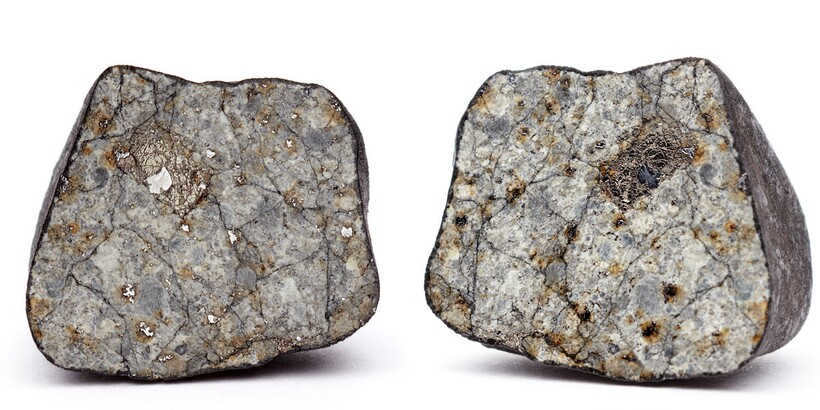

The Institute of Geology and Mineralogy of the Russian Academy of Sciences, along with the Committee of the Russian Academy of Sciences on meteorites, has identified the Chelyabinsk meteorite as an ordinary chondrite, which means it is composed of stone. Upon analysis, they discovered an elevated level of iron (30%), as well as traces of nickel, cobalt, and copper. The presence of copper is considered unusual for chondrite meteorites of this type.
THIS IS FASCINATING. How can one identify a meteorite? Typically, it appears black due to the heat from entering the Earth’s atmosphere, and it may have a matte or glossy appearance. If it has been on the ground for a significant amount of time, it will oxidize and develop a brown color with hints of red or blue.
The shock wave from the meteorite’s hypersonic speed was the primary cause of damage to the residents of Chelyabinsk. The impact also affected neighboring areas such as the city of Kopeysk and more remote settlements. District centers such as Emangelinsk, Korkino, and the village of Etkul were also affected. The city of Yuzhnouralsk, located 89 km from the epicenter of the event, was the farthest city to be affected.
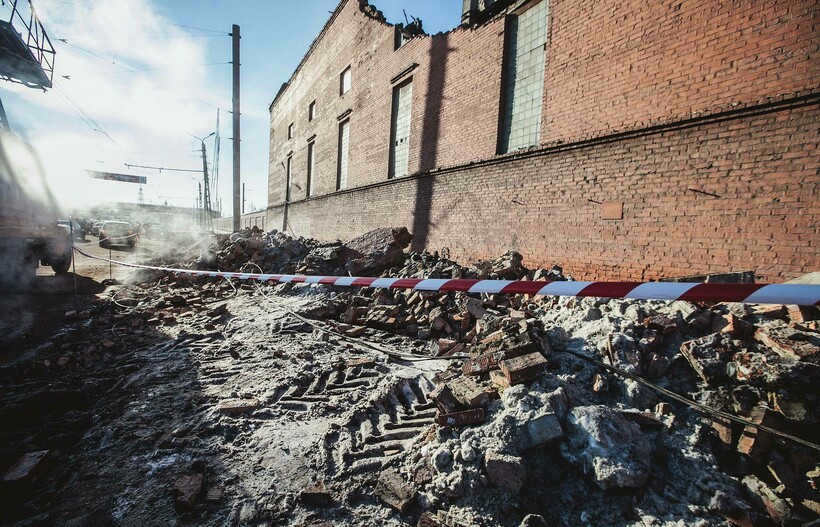
The impact of the meteorite in Chelyabinsk caused widespread destruction, with a 90 km radius perpendicular to its trajectory. Numerous residential buildings, educational institutions, and medical facilities were left with shattered windows, resulting in damage to approximately 4,000 structures. Some buildings suffered even more severe damage, with roofs blown off. Over 1,600 individuals sought medical attention, primarily due to injuries caused by broken glass.
Seismographs located within a 4,000 km radius of the epicenter detected a magnitude 4 earthquake two days following the meteorite’s arrival. This seismic activity was notably less intense than the 5-point tremor caused by the Tunguska meteorite.
THIS IS FASCINATING. In the event that a radiant bolide streaks through the atmosphere, it is not guaranteed that it will result in a meteorite impact. Had the Chelyabinsk meteorite been lighter and traveling at a velocity greater than 20 km/s, it would have completely vaporized during its descent before ever reaching the Earth’s surface.
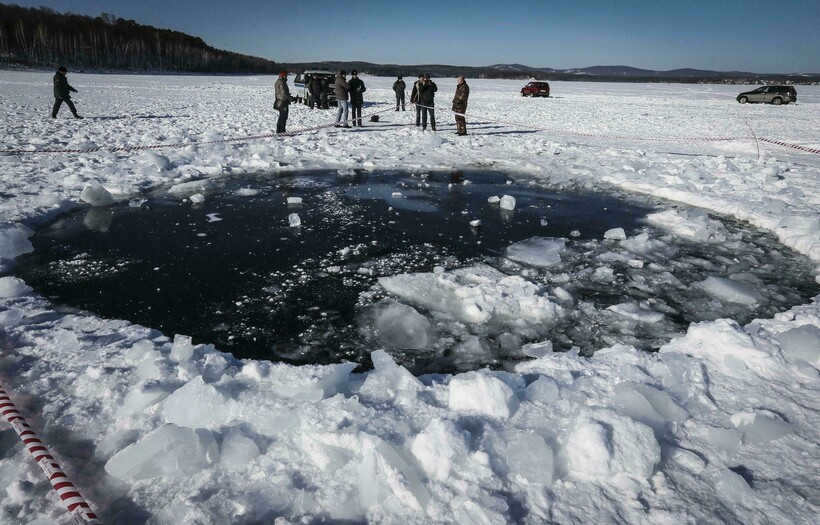
Interesting Information about the Chelyabinsk Meteorite
Following the incident, the meteorite has not only caused destruction. It has continued its existence on Earth, adding intriguing details to its history:
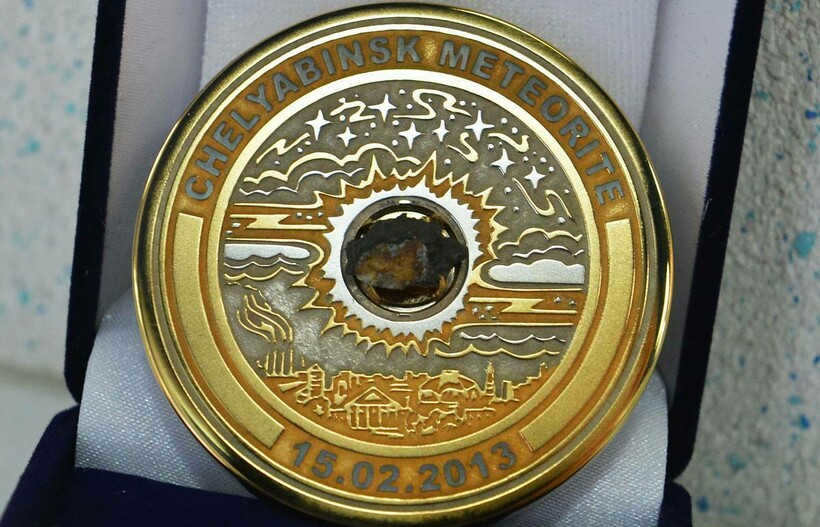
- The meteorite was not detectable beforehand as telescopes can only view objects with a diameter of 100 meters or larger.
- Initially, eyewitnesses mistook the meteorite impact for a military missile explosion or an airplane crash.
- To recover the space visitor from the bottom of Lake Chebarkul, the Chelyabinsk region allocated 3 million rubles.
- Due to the widespread damage in certain areas of the Chelyabinsk region, the state of emergency lasted for a month.
- A few days after the meteorite fell, observers witnessed the appearance of silvery clouds in the sky. Scientists noted that the Tunguska meteorite had caused a similar phenomenon.
- As a token of appreciation to the ten champions of the Winter Olympics in Sochi, unique medals were created, incorporating fragments of the actual event. A limited edition of 50 of these special souvenirs were produced.
- Lake Chebarkul gained widespread recognition, prompting local authorities to develop a dedicated tourist route leading to the site of the memorable event. As part of this initiative, a commemorative stele was installed to commemorate the occasion.
The Importance of the Chelyabinsk Meteorite for Scientific Research
The scientific community has shown great interest in the Chelyabinsk meteorite due to its cosmic origin. In Russia, the Committee on Meteorites of the Russian Academy of Sciences is responsible for the study and management of meteorites. They analyze the chemical composition, examine the structure, and investigate the physical properties of these extraterrestrial rocks found within the country. The acquired knowledge has proven valuable across various scientific disciplines:
- Metallurgists utilize this data to study and develop artificial alloys.
- Geodynamic scientists can draw conclusions about the internal structure of our planet.
- The meteorite’s atmospheric passage provides insights into the state of the Earth’s atmosphere.
- Mineralogy researchers gain valuable insights into the formation of minerals in the universe.
For instance, every chemical element discovered on Earth has also been found in meteorites, while those elements that remain unknown to science have yet to be identified. As a result, all celestial bodies and the universe at large are comprised of matter with a common origin.
THIS IS FASCINATING. Approximately 1000 ordinary meteorites fall to Earth annually, with the majority destined to remain submerged in the depths of oceans or buried in sandy or snowy uninhabited areas. Scientists are only able to obtain a meager amount: around 5 objects for study each year.
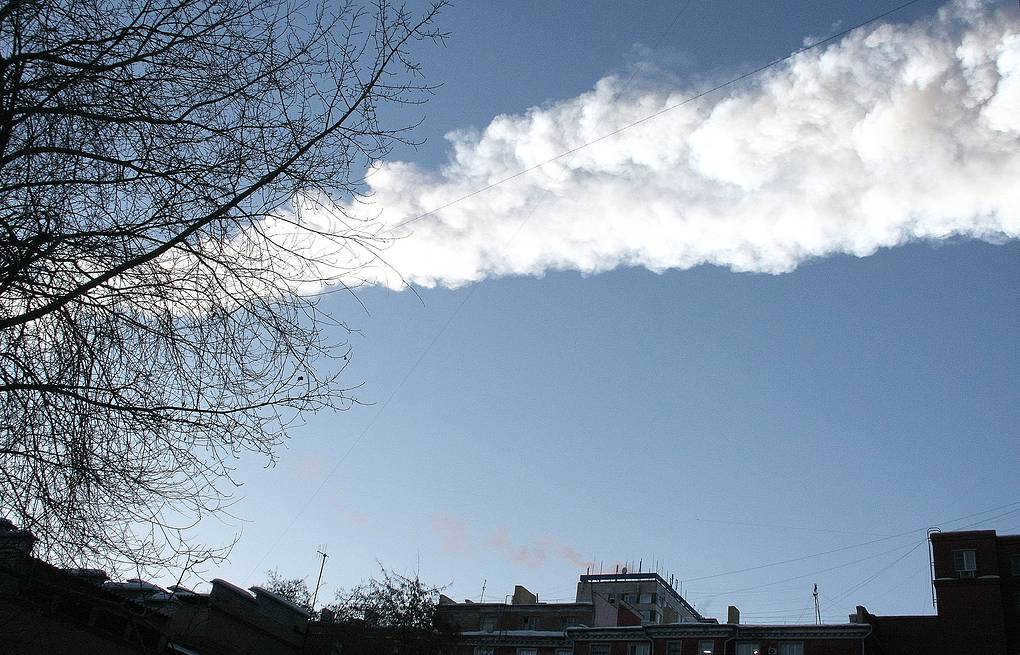
Yekaterinburg, February 15. /TASS/. Scientists on Earth are marking the third anniversary of the Chelyabinsk meteorite’s fall with fresh findings and renewed discussions on the feasibility of implementing a program to counter threats from space. In 2013, the Russian Emergencies Ministry and Roscosmos agreed to develop technologies to fend off meteorite attacks. However, members of the Russian Academy of Sciences claim that no progress has been made on this issue in the three years since.
According to researchers from Russia, it will take centuries to implement these projects. The crucial aspect, in their opinion, is that the government has recognized that the space hazard is not a fictional tale but an actual peril capable of obliterating cities and causing the loss of thousands of lives.
The Fall Chronicles
On February 15, 2013, at around 7:10 Moscow time, a meteorite named “Chelyabinsk” made its way into the Earth’s atmosphere. This event resulted in a powerful explosion at an altitude of 30-50 km, causing numerous fragments to fall over a wide area in the Chelyabinsk region. The explosion was witnessed by hundreds of thousands of individuals in the Urals and northern Kazakhstan. The largest pieces of the celestial object landed near Lake Chebarkul, which is located 78 km west of Chelyabinsk.
None of the residents in the Chelyabinsk area, nor the Emergency Situations Ministry, nor the military, nor the authorities were prepared for the unexpected invasion from space. As a result, the number of casualties on February 15, 2013 skyrocketed throughout the day, from 400 people in the morning to 1200 people in the evening. The explosion caused damage in ten different districts of the region.
Experts later discovered that the extensive damage to buildings was primarily due to the outdated window frames that were originally installed in the 1970s. Buildings with modern double-glazed windows remained intact. In the aftermath of the meteorite fall, the demand for plastic windows among Chelyabinsk residents increased by 2.5 times according to local stores. As a result, new constructions in the region now prioritize the use of double-glazed windows.
Many inhabitants of the Southern Urals have reported that they were able to avoid getting injured thanks to the civil defense courses they took during their youth. They were aware of the appropriate direction to fall in the event of “a flash from the right” and knew that “it is better to stay away from windows during an explosion.”
Irina Anfalova-Shishkina, the head of the Department of Upbringing, Additional Education, and Student Socialization at the Ministry of Education in Chelyabinsk, stated that the young residents of Chelyabinsk have been taught how to fall correctly during a meteorite explosion over the course of three years.
“The students have started to approach OBG with a greater sense of seriousness following the meteorite fall. The events that took place three years ago serve as a clear demonstration of the importance of comprehensive skill and knowledge development. Life is diverse and being prepared for anything is essential,” stated the agency’s interlocutor.
Exciting new findings
In the wake of the meteorite’s descent, numerous researchers put forth the theory that it may serve as a precursor to the asteroid 2012DA14, measuring 45 meters in diameter, which was projected to pass by Earth on February 15, 2013, coming astonishingly close. The entire globe held its breath in anticipation. Were it to collide with the planet’s surface, the asteroid would inflict the same level of devastation as the infamous Tunguska meteorite or a nuclear bomb yielding 2.5 megatons of power.
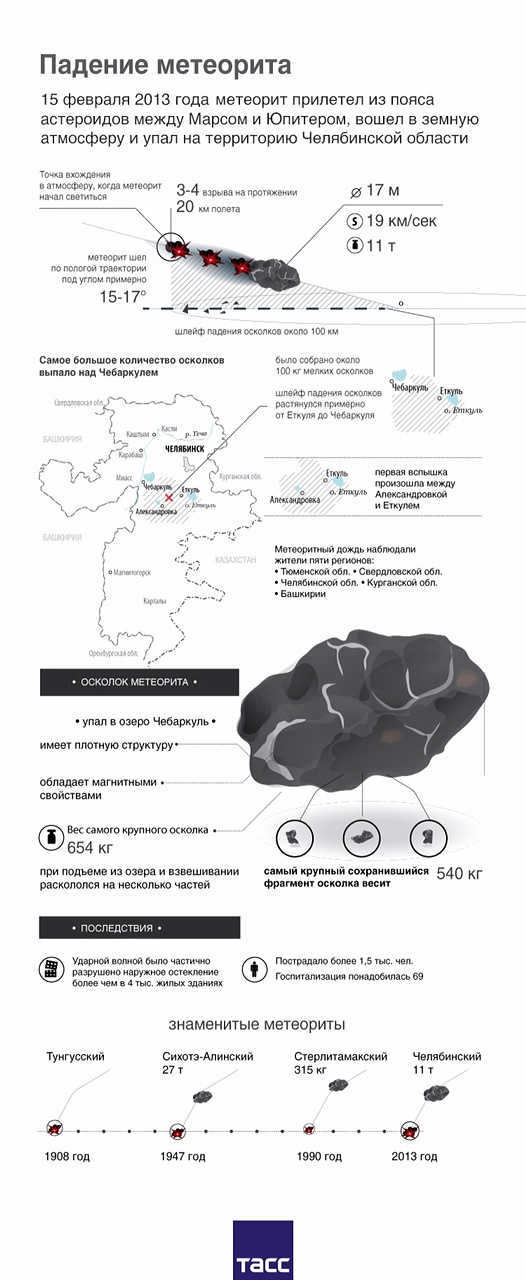
Based on the most recent data provided by Russian researchers, it has been discovered that the Chelyabinsk meteorite could potentially contain a substance called tetratonite. This substance can be likened to a “hard disk” that contains valuable information about the history of our solar system. Additionally, scientists have come across unique substances within the dust of the Chelyabinsk meteorite. Some of these substances bear resemblance to those that are typically formed during volcanic eruptions on Earth. This is a significant finding, as these types of substances have not been previously identified in meteorite dust.
Pavel Skripnichenko, a member of the Department of Astronomy and Geodesy at the B.N. Yeltsin Ural Federal University, stated that following the meteorite’s impact, scientists realized the potential for predicting global disasters caused by asteroids and comets approaching Earth. Skripnichenko emphasized that “we found ourselves defenseless against local catastrophes caused by meteorites of similar size to the Chelyabinsk bolide.”
There has been a lot of talk recently about the development of a program aimed at safeguarding the Earth from meteorites.
Safeguarding the population from outer space threats
Vladimir Puchkov, the head of the Russian Emergencies Ministry, was among the first to announce the establishment and implementation of a space program. In the wake of the Chelyabinsk meteorite incident, he stated that Russian rescuers, in collaboration with their American counterparts, are planning to work together on creating a system to protect critical infrastructure and the general population from the dangers posed by asteroids and comets.
Furthermore, as per Puchkov, the Emergencies Ministry, in collaboration with international partners, will persist in enhancing space monitoring and prediction systems for emergencies and fires, safeguarding social infrastructure against space-related hazards, and advancing technologies to safeguard human life and well-being during disasters.
Puchkov additionally disclosed that the Russian Ministry of Emergency Situations will establish experimental regions aimed at shielding the populace from space hazards, including meteorites and asteroids. The minister proposed utilizing the territories of Russia, Europe, and North America for this purpose.
Subsequently, Roscosmos stepped forward and unveiled its intentions to establish an astrometric observatory on the lunar surface. A collaboration agreement for the undertaking was duly signed in 2013 by Oleg Ostapenko, the head of the space agency, and Ilshat Gafurov, the rector of Kazan Federal University (KFU). The joint venture between the university and Roscosmos aimed to conduct comprehensive research on meteorites and space debris.
Insufficient Funding
As per Viktor Grokhovsky, a member of the RAS Meteorites Committee and a professor at the Ural Federal University, most of the aforementioned projects are still only in the conceptual stage after three years. The primary challenge lies in the lack of adequate funding. These projects are highly expensive and require billions of dollars for their execution. It might take up to a century to realize them. Consequently, at present, these plans exist only on paper, with no practical implementation of the programs that were previously announced by the Ministry of Emergency Situations and Roscosmos, Grokhovsky stated.
Tourist Routes to Chebarkul
The Chebarkul meteorite not only brought attention to the seriousness of space threats, but also gained recognition for its researchers. For instance, two asteroids in the Solar System were named after Ural scientists – Viktor Grokhovsky and Maria Gritsevich, a senior researcher at the laboratory.
Furthermore, a tourist route has been established in the town of Chebarkul near the location where the meteorite fell. The first visitors to explore this route were Chinese residents, who enthusiastically proclaimed that the whole world became aware of the Urals’ existence thanks to the meteorite. Tourists are invited to explore the “The Fall of the Chebarkul Meteorite” exhibit, which was inaugurated on June 21, 2013, at the city museum.
"Over the course of three years, the attendance of the exposition has seen a rise of 400 individuals – from 4.5 thousand in 2013 to 4.9 thousand in 2015," shared Tatiana Zapevalova, the director of the Chebarkul Local History Museum, with a TASS correspondent.
The Chelyabinsk meteorite paved the way for a variety of Urals musicians. For instance, the company "Workshop of Unusual Solutions" from Miass released a musical album featuring compositions "inspired by the meteorite". Numerous copies of an instrumental classical music CD were sold, incorporating impressions and reminiscences of the event.
The fall of the meteorite led to the creation of numerous sayings and jokes that have become ingrained in the daily lives of the people of the Ural region. Nowadays, it is common to hear phrases such as “There’s nothing quite like starting the day with a meteorite” or “The military still hasn’t found the second black box from the meteorite.” Illustrations from three years ago have become incredibly popular. In one cartoon, an extraterrestrial creature sitting on a meteorite exclaims, “Oh, my goodness, Chelyabinsk!” Meanwhile, people on Earth are shouting, “Oh, my goodness, a meteorite!” These cartoons have garnered over a million views on the internet in just three years.
The Chelyabinsk meteorite became the inaugural subject of analysis for a state-of-the-art forensic laboratory in Pskov. Forensic scientists utilized the meteorite fragment to test the equipment’s capabilities in spectral analysis of substances such as drugs, alcohol, and fuel. The laboratory has since been operating successfully.
Musicians, writers, and travel agencies are optimistic that the Chelyabinsk meteorite will serve as a source of inspiration for their future hits and bestsellers.
In present-day Russia, an extraordinary occasion is being commemorated – the 10th anniversary of the Chelyabinsk meteorite’s descent.
All television networks aired countless footage, resulting in the worldwide recognition of the Ural city’s name. Years later, some individuals even worship the extraterrestrial rock, while others affectionately refer to it as “cookies.” Further insights can be found in the detailed report by our correspondent, Dmitry Zimenkin. For more information, refer to the REN TV article.
How the Chelyabinsk meteorite transformed the city with gas stations shaped like flying saucers
As you travel from the airport, Chelyabinsk serves as a constant reminder of its main attraction’s anniversary with a multimedia stele and countless animations of a meteoroid falling along the highway. These visuals adorn every pole.
Upon entering the city, journalists were greeted by an extraordinary sight: a gas station designed to resemble an unidentified flying object. Everywhere you look, your eyes are drawn to various “celestial bodies,” such as a moon-shaped composition.
Even shopping centers and confectionery establishments bear the name of the Chelyabinsk meteorite. They offer meteorite-shaped chocolates with nuts or unique souvenir options. Certified fragments of the meteorite are also available for purchase in stores.
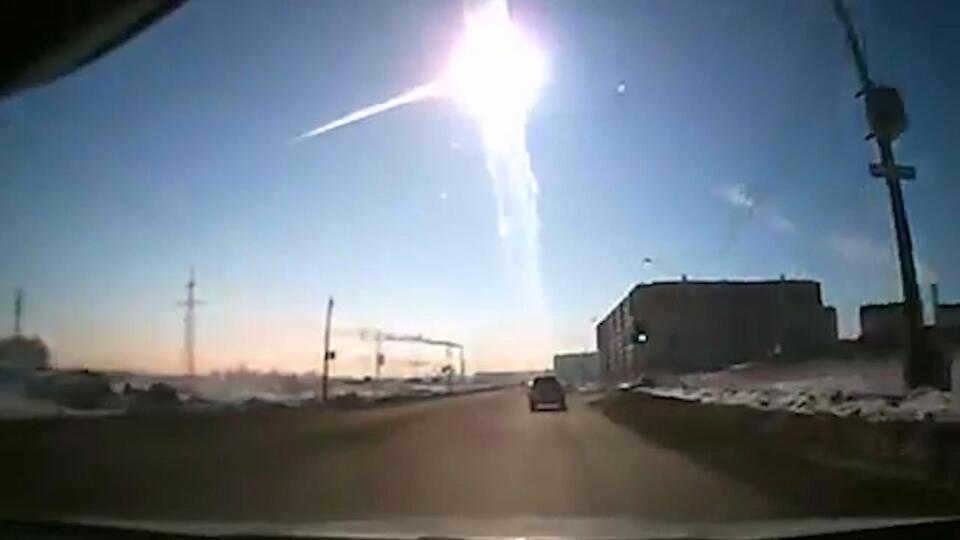
What year did the meteorite fall near Chelyabinsk?
Currently, this celestial body appears to be harmless. However, a decade ago, when a massive object the size of a six-story building entered the atmosphere, it was far from enjoyable.
It disintegrated at an altitude of approximately 30 kilometers, and the largest fragment of it reached the Earth’s surface. Fortunately, there were no casualties among the population as a result of the meteoroid’s fall. Nevertheless, the chunk of cosmic debris, which could be up to 4.5 billion years old, did cause minor injuries and frightened people to some extent.
The meteoroid was witnessed by hundreds of thousands, if not millions, of people simply because it was nearly impossible to miss such an event.
The celestial object ended up being benign. Its biggest fragments landed in Lake Chebarkul. The most convenient time to reach the impact site is during winter when one can traverse the ice and snow on foot.
The journalist personally witnessed the exact location of the meteorite’s descent, which required a trek of several kilometers. Interestingly, two additional substantial fragments can be found there. However, it is not practical for scientific purposes to retrieve them, and it would likely be too costly for collectors.
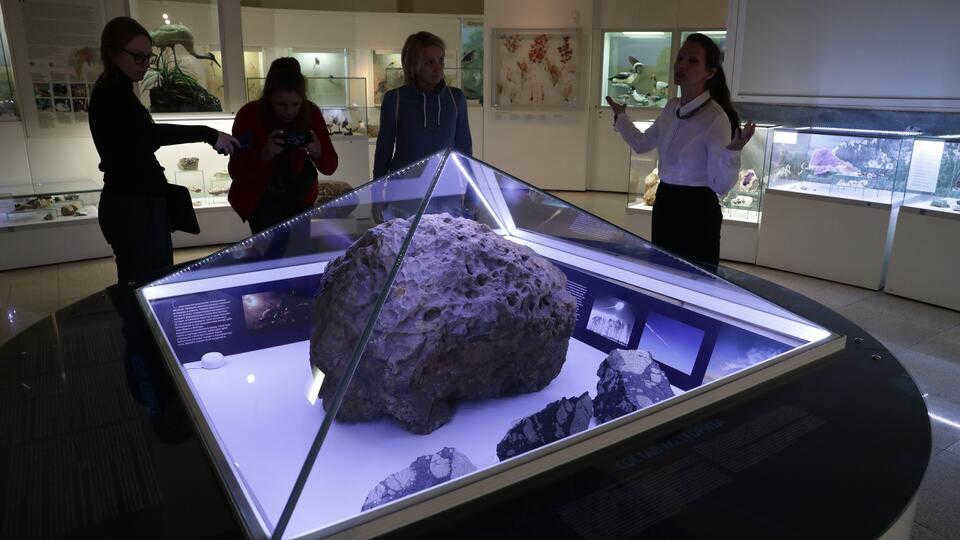
Findings from the Meteorite Study
According to believers of the occult, the meteorite is believed to possess supernatural energy.
“They walk around the display case with reverence. They form a circle, holding hands, and seem to be praying,” stated Irina Ivlieva, the head curator of the Historical Museum of the Southern Urals.
However, for scientists, the meteorite serves as a valuable source of scientific knowledge. For instance, they have determined that the space dust from this extraordinary meteorite has been dispersed all across the globe and is visible from satellites. Additionally, it has been discovered that the meteorite possesses magnetic properties that are uncommon on Earth.





